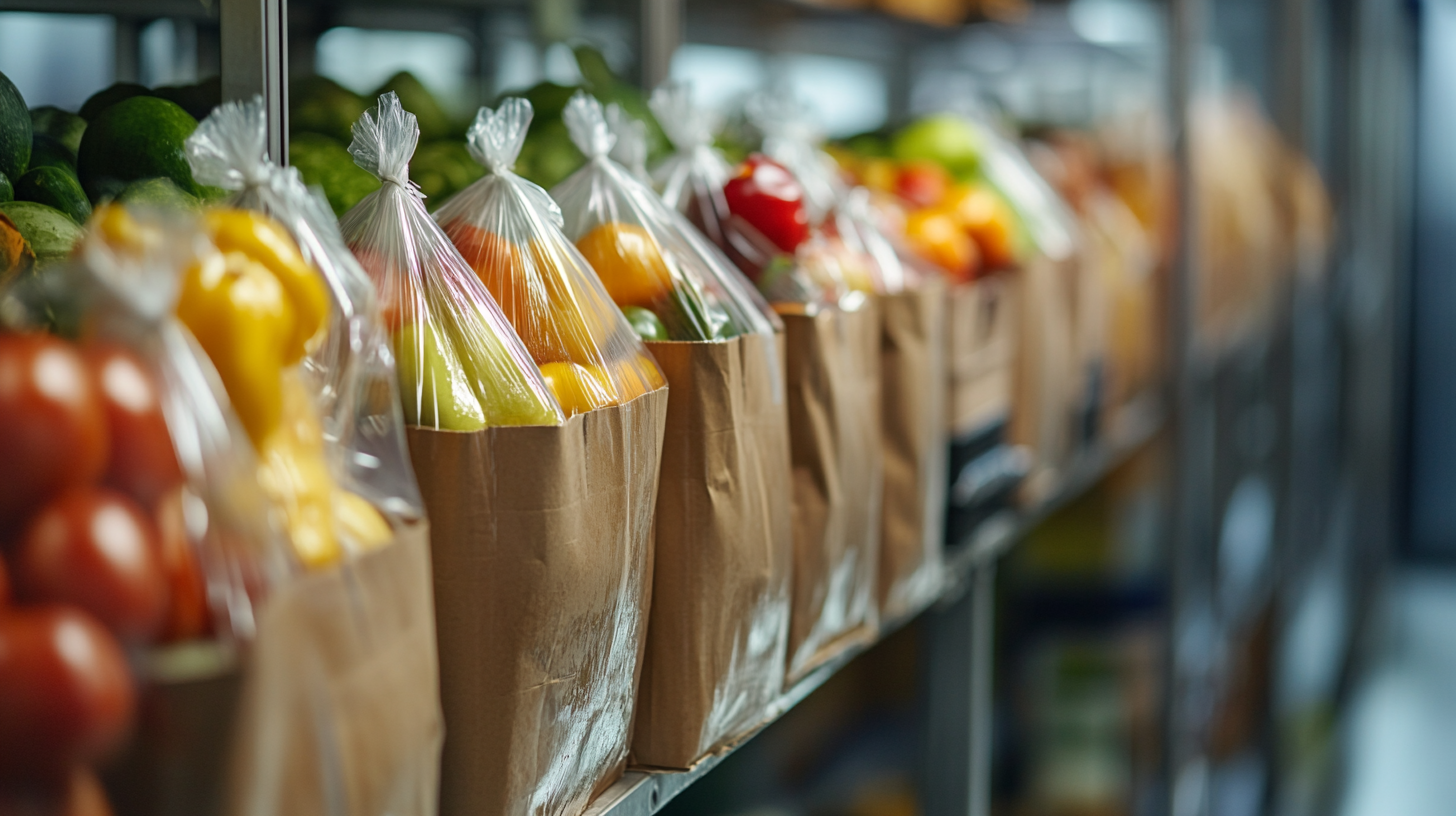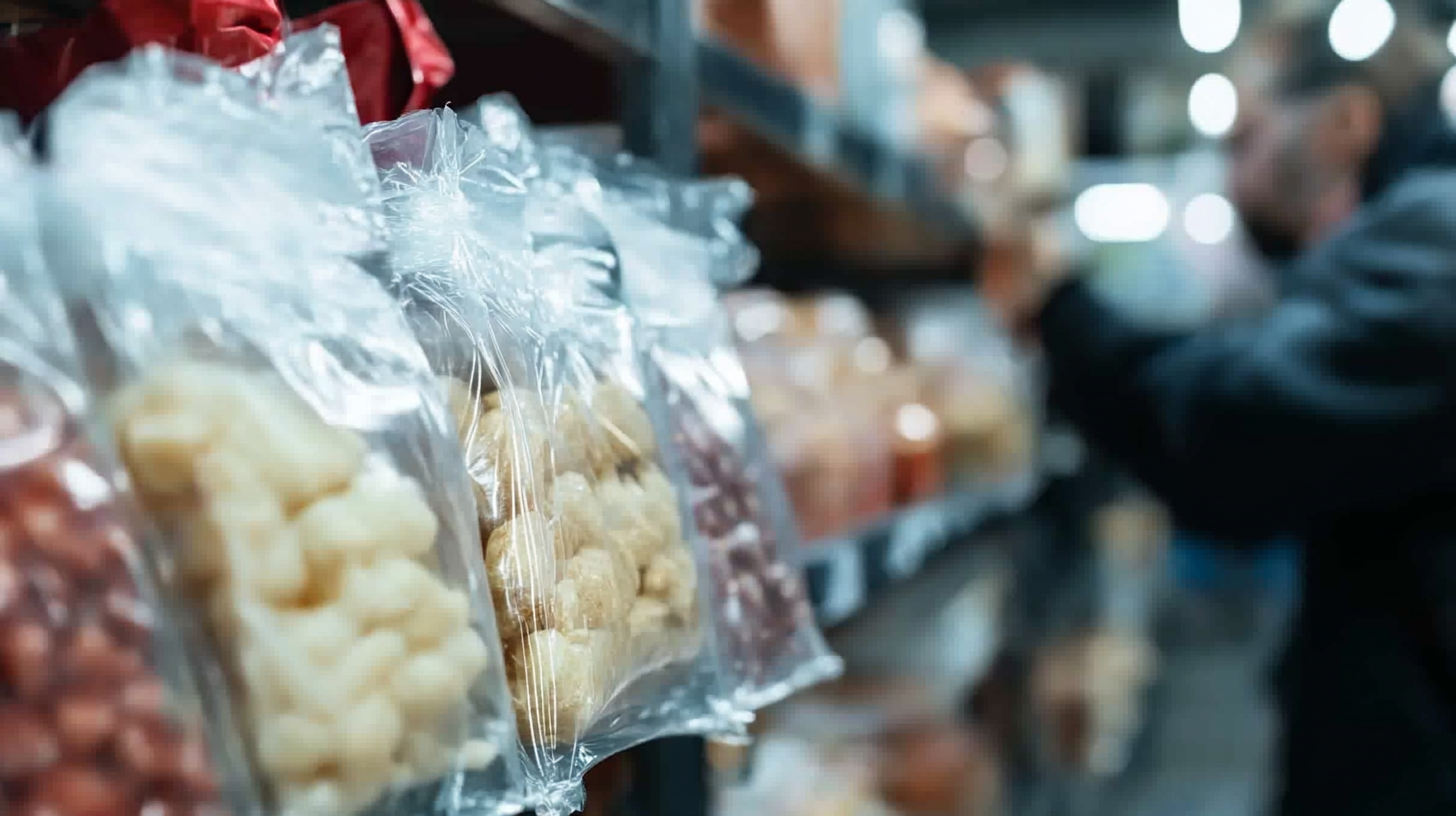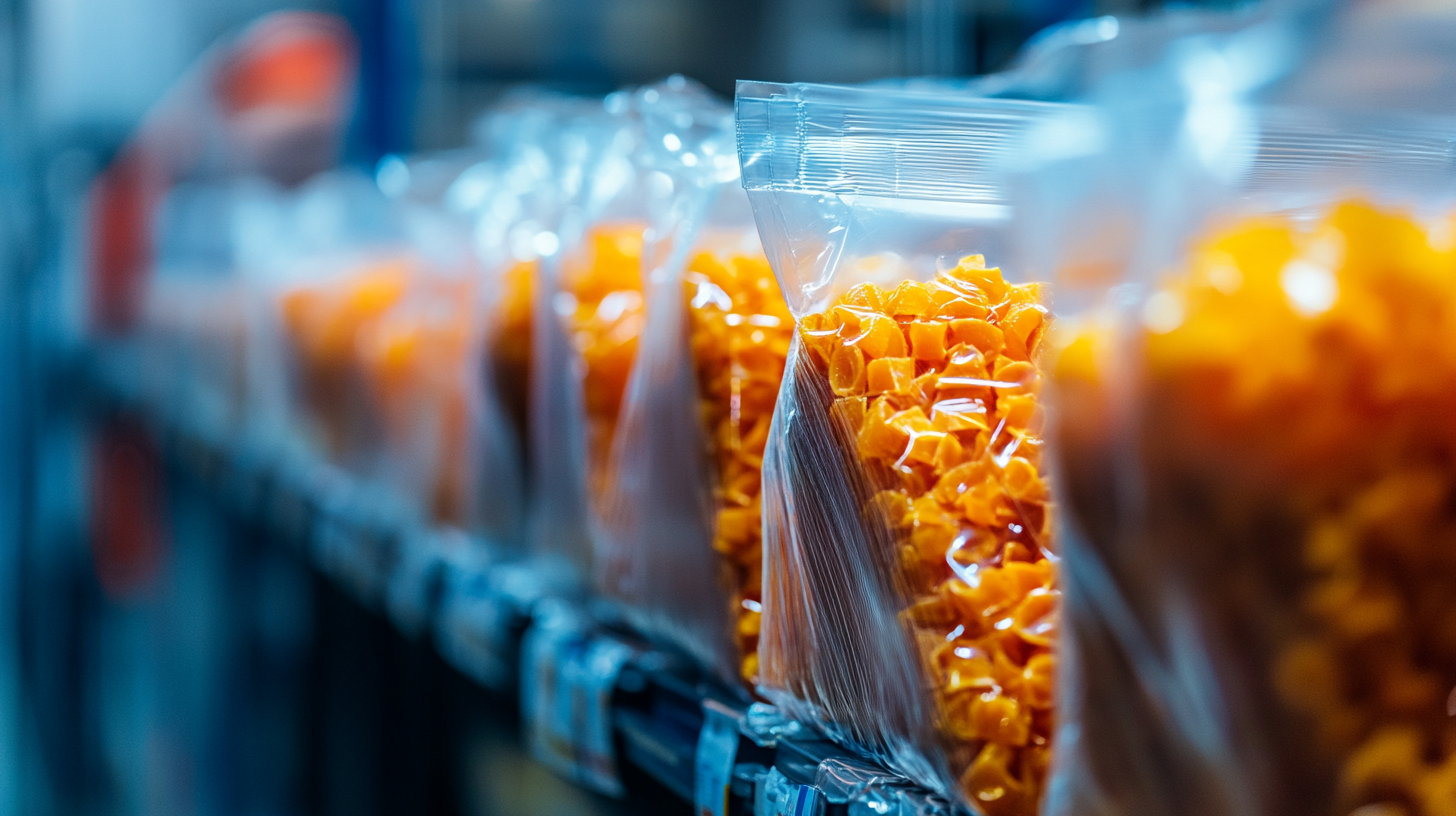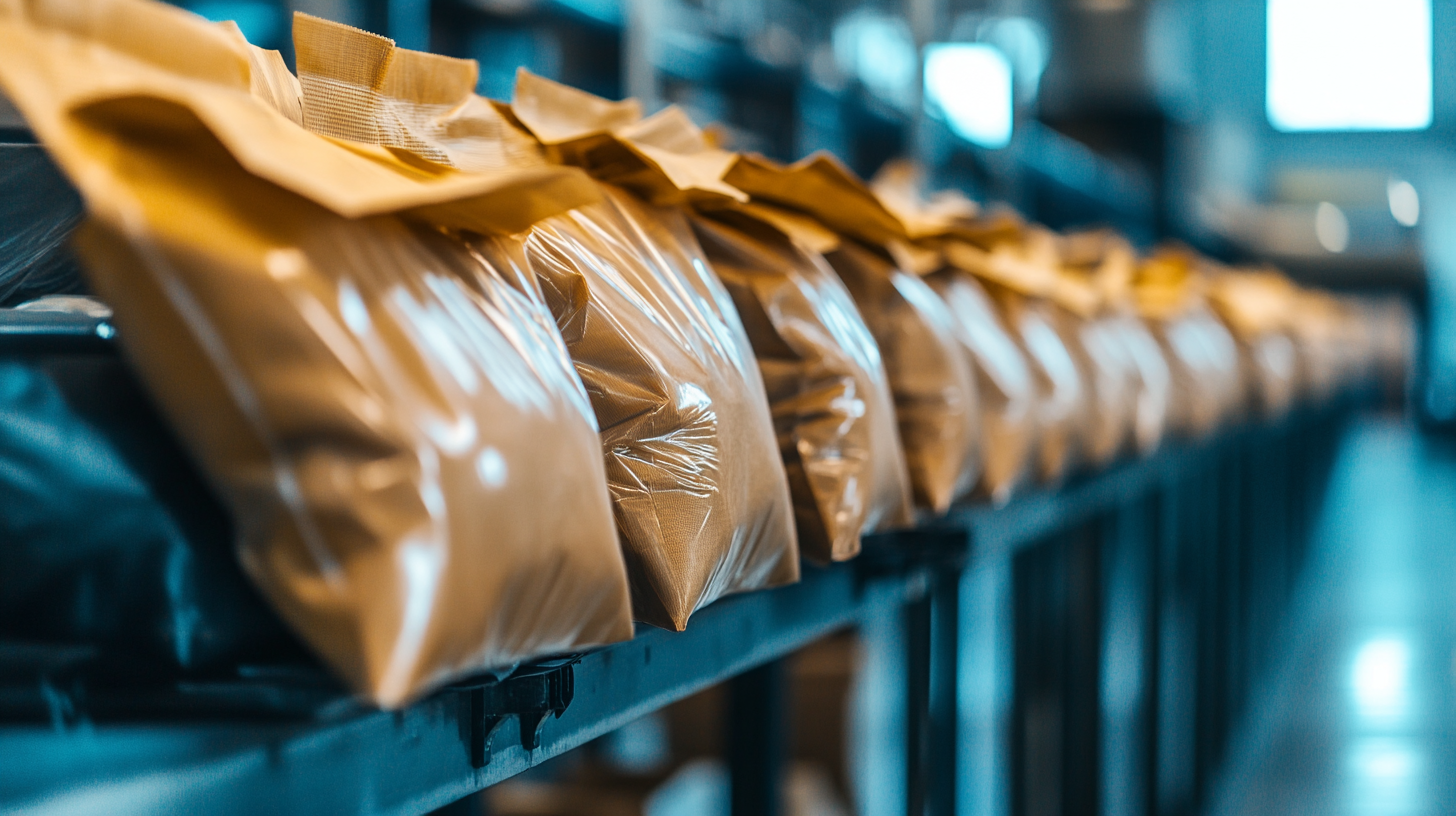7 Essential Insights for Sourcing Food Packaging Bags Globally
As the global food packaging industry continues to evolve, the importance of sourcing quality Food Packaging Bags has never been more critical. According to a report by Grand View Research, the global food packaging market is projected to reach USD 500 billion by 2025, with an increasing demand for sustainable and innovative packaging solutions. The growing awareness regarding food safety and the aesthetics of packaging has compelled brands to invest in high-quality packaging materials that not only preserve freshness but also enhance consumer appeal.
Furthermore, the rise of e-commerce and the changing retail landscape have amplified the need for versatile and resilient Food Packaging Bags. A study by Smithers Pira indicates that the flexible packaging market is expected to grow by over 4% annually, highlighting the shift towards lightweight and eco-friendly solutions. With these trends in mind, understanding the nuances of sourcing Food Packaging Bags on a global scale is essential for manufacturers and retailers aiming to maintain a competitive edge and meet ever-evolving consumer demands.

Understanding Global Regulations for Food Packaging Bags
The global food packaging market is poised for remarkable growth, with projections estimating its size to reach 812.08 billion yuan by 2024. This upward trajectory is significantly influenced by increasing demands for environmentally friendly packaging solutions. Consumers are becoming more aware of sustainability issues, which is prompting regulatory bodies around the world to impose stricter regulations on traditional plastic use. Such developments are critical for businesses aiming to source food packaging bags that comply with these evolving global standards. As various governments gradually introduce bans on non-biodegradable plastic products, industries must adapt swiftly to remain compliant while meeting consumer expectations for sustainable materials. Innovations in packaging, such as compostable options for fresh produce, are becoming essential trends. These preferences reflect a broader movement towards environmental consciousness, which will continue to shape the future of food packaging. In addition to compliance with regulations, companies are encouraged to explore novel packaging technologies, such as interactive designs incorporating augmented reality (AR) elements. This not only informs consumers about the product but also enhances engagement through technology. As we look towards the future, the integration of sustainability into food packaging strategies will not only align with legal requirements but also fulfill market demands for greener options. This dual focus will be key for businesses striving to thrive in the competitive global landscape of food packaging.

Identifying Reliable Manufacturers and Suppliers Worldwide
In today's global market, sourcing food packaging bags requires a strategic approach to identify reliable manufacturers and suppliers. Recent reports indicate a rising trend in supply chain idle capacity, reaching its highest level since July 2023, driven by economic slowdown. This trend emphasizes the importance of being selective when choosing suppliers, as the current market dynamics can affect production capacity and lead times.
According to industry insights, finding a trustworthy wholesale supplier is crucial for online sellers. A robust partnership ensures timely and high-quality order fulfillment, which can significantly impact the success of a business. For instance, the automotive industry is experiencing pressure from manufacturers demanding lower prices from their parts suppliers, highlighting the need for reliable sourcing that can withstand market fluctuations.
Moreover, initiatives like Taipei's call for a "democratic supply chain" in drone manufacturing emphasize the necessity for businesses to forge partnerships that not only offer competitive pricing but also align with their ethical values. As companies navigate these complexities, leveraging data from global supply chain reports becomes essential to maintain operational efficiency and ensure the sustainability of their sourcing practices.

Evaluating Material Options for Food Safety and Sustainability
When it comes to sourcing food packaging bags globally, evaluating material options is crucial for ensuring food safety and sustainability. The recent emphasis on environmentally friendly packaging has led to an increased awareness of the materials used in food packaging. Traditional plastics, while effective at preserving food and preventing spoilage, pose significant risks to both consumer health and the environment. As such, sourcing options should not only focus on functionality but also prioritize sustainability.
Biodegradable and compostable materials are emerging as promising alternatives. These materials can break down naturally, significantly reducing landfill waste and harmful pollution associated with conventional plastics. Options such as plant-based bioplastics, which are derived from renewable resources, offer the potential for a closed-loop system where end-of-life packaging can be repurposed or reabsorbed back into nature. It’s essential to evaluate the certification of these materials, ensuring they meet food safety regulations and standards.
Another important consideration is the role of materials in preserving food safety. Packaging must provide a barrier against contaminants while ensuring that no harmful substances leach into food products. Conducting thorough evaluations of the safety profiles of potential materials is vital to prevent any health risks associated with food packaging. Ultimately, balancing the demands of food safety with the need for sustainable options will lead to innovative solutions that benefit both consumers and the planet.

Navigating Shipping Logistics for International Sourcing
When sourcing food packaging bags globally, navigating shipping logistics is crucial for ensuring timely delivery and cost efficiency. The international supply chain is often complex due to customs regulations, varying shipping methods, and the potential for delays. Understanding these logistics can significantly affect your overall experience and the quality of your products upon arrival.
One key insight is to choose the right shipping method based on your specific needs. Air freight might be faster, but it’s usually more expensive; on the other hand, sea freight is more economical but can take longer. Analyze your timeline and budget to determine which option aligns best with your business goals. Additionally, consider using a freight forwarder who can simplify the logistics process, handle customs documentation, and provide expertise in navigating international shipping challenges.
Another important aspect is to stay informed about the shipping regulations and requirements of each country involved. Different regions have their own standards for packaging materials, especially for food-related products, which can impact compliance and costs. Working closely with suppliers and logistics providers to ensure that all necessary certifications and regulations are met will help mitigate potential issues that could arise during transit. By focusing on these logistics, you can streamline your sourcing process and enhance the reliability of your supply chain.
Cost Management Strategies in Global Food Packaging Procurement
In the increasingly competitive landscape of the food packaging industry, effective cost management strategies are crucial for companies sourcing packaging bags globally. According to a report by Smithers Pira, the global flexible packaging market is projected to reach $300 billion by 2025, highlighting the growing demand for efficient and cost-effective solutions. Companies that understand the intricacies of procurement can capitalize on this robust market growth while maintaining their profit margins.
One key strategy in managing costs is leveraging global suppliers to obtain competitive pricing. The World Bank indicates that sourcing from regions with lower production costs can lead to savings of up to 30%. For instance, businesses can look to emerging markets in Asia, where innovations in manufacturing processes have significantly reduced packaging costs. Additionally, strategic partnerships with suppliers that offer value-added services, such as just-in-time delivery and sustainable packaging solutions, can further enhance cost efficiency.
Another critical aspect is the implementation of advanced analytics in procurement processes. A recent study by McKinsey & Company reveals that companies utilizing data-driven decision-making for sourcing can achieve a 20% reduction in procurement costs. By analyzing market trends, supplier performance, and material prices, businesses can make informed choices that align with their financial goals. In doing so, they not only mitigate risks associated with price volatility but also position themselves as leaders in the sustainable packaging movement, appealing to environmentally conscious consumers.

 中国
中国